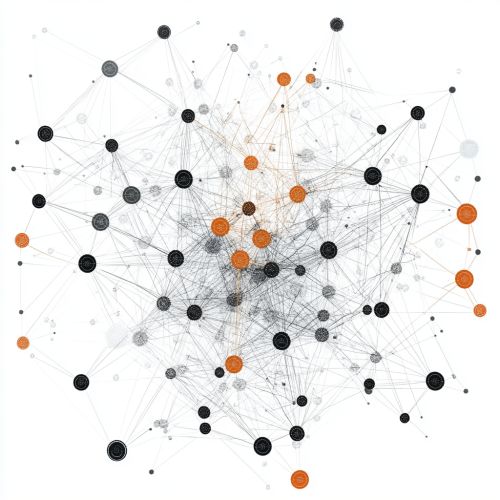NP
Introduction
The term "NP" is a fundamental concept in the field of computational complexity theory, a branch of theoretical computer science that focuses on classifying computational problems according to their inherent difficulty. NP stands for "nondeterministic polynomial time," and it refers to a class of decision problems for which a proposed solution can be verified in polynomial time by a deterministic Turing machine. Understanding NP is crucial for exploring the boundaries of what can be efficiently computed and has significant implications in fields such as cryptography, optimization, and algorithm design.
Definition and Characteristics of NP
NP is formally defined as the set of decision problems for which there exists a nondeterministic Turing machine that can decide the problem in polynomial time. In simpler terms, a problem is in NP if, given a candidate solution, there is an efficient (i.e., polynomial-time) method to verify whether the solution is correct. This verification process is deterministic, meaning it follows a specific sequence of steps without any randomness or guessing.
A key characteristic of NP problems is their reliance on nondeterminism during the solution search phase. Nondeterminism allows the theoretical model to "guess" a solution and then verify it efficiently. While this concept is abstract and not directly implementable on real computers, it provides a powerful framework for understanding problem complexity.
Examples of NP Problems
Many well-known computational problems fall under the NP category. Some of these include:
- Boolean Satisfiability Problem (SAT): Given a Boolean formula, determine if there exists an assignment of truth values to variables that makes the formula true.
- Hamiltonian Path Problem: Determine whether there exists a path in a graph that visits each vertex exactly once.
- Subset Sum Problem: Given a set of integers, determine if there is a non-empty subset whose sum is zero.
These problems share the common feature that, while finding a solution may be computationally challenging, verifying a given solution is relatively straightforward.
NP-Complete Problems
A subset of NP problems, known as NP-complete problems, holds particular significance. An NP-complete problem is one that is both in NP and as hard as any problem in NP. Formally, a problem is NP-complete if every problem in NP can be reduced to it using a polynomial-time reduction. This means that if an efficient (polynomial-time) algorithm exists for any NP-complete problem, then every problem in NP can be solved efficiently.
The concept of NP-completeness was introduced by Stephen Cook in 1971, and Richard Karp further developed the theory by identifying 21 NP-complete problems. Some of the most famous NP-complete problems include:
- Traveling Salesman Problem (TSP): Find the shortest possible route that visits each city once and returns to the origin city.
- Knapsack Problem: Determine the most valuable combination of items that can fit within a given weight limit.
- Graph Coloring Problem: Assign colors to the vertices of a graph such that no two adjacent vertices share the same color, using the minimum number of colors.
The P vs NP Question
One of the most profound open questions in computer science is the "P vs NP" problem, which asks whether every problem that can be verified in polynomial time can also be solved in polynomial time. In other words, it questions whether P (the class of problems solvable in polynomial time) is equal to NP.
The P vs NP question has far-reaching implications. If P equals NP, it would mean that many complex problems currently believed to be intractable could be solved efficiently, revolutionizing fields like cryptography, optimization, and artificial intelligence. Conversely, if P does not equal NP, it would confirm the inherent difficulty of these problems, justifying the use of heuristic and approximation algorithms.
Despite decades of research, the P vs NP question remains unresolved. It is one of the seven Millennium Prize Problems for which the Clay Mathematics Institute offers a $1 million prize for a correct solution.
Implications and Applications
The study of NP and NP-complete problems has significant practical implications. In cryptography, the security of many encryption schemes relies on the assumption that certain problems are hard to solve, i.e., they are in NP but not in P. For example, the difficulty of factoring large integers underpins the security of RSA encryption.
In optimization, understanding NP-completeness helps in designing efficient approximation algorithms for problems that are unlikely to have polynomial-time solutions. Techniques such as linear programming and dynamic programming are often employed to find near-optimal solutions within reasonable time frames.
Moreover, NP-complete problems serve as benchmarks for evaluating the performance of new algorithms and computational models. Researchers use these problems to test the limits of quantum computing, parallel computing, and other emerging technologies.
Complexity Classes Related to NP
Several complexity classes are closely related to NP, each offering a different perspective on problem complexity:
- **Co-NP**: The class of problems for which the complement can be verified in polynomial time. A problem is in co-NP if its "no" instances can be efficiently verified.
- **NP-Hard**: A class of problems that are at least as hard as the hardest problems in NP. Unlike NP-complete problems, NP-hard problems are not required to be in NP.
- **PSPACE**: The class of problems solvable using a polynomial amount of memory. PSPACE includes all problems in NP and co-NP, as well as many others that require more than polynomial time.
Understanding these classes helps in mapping the landscape of computational complexity and identifying the relationships between different types of problems.
Image


